Construction begins on 6 Cross Island Line Phase 2 stations; targeted for 2032 completion
The Cross Island Line will probably be Singapore’s last east-to-west MRT line, Acting Minister for Transport Jeffrey Siow said.
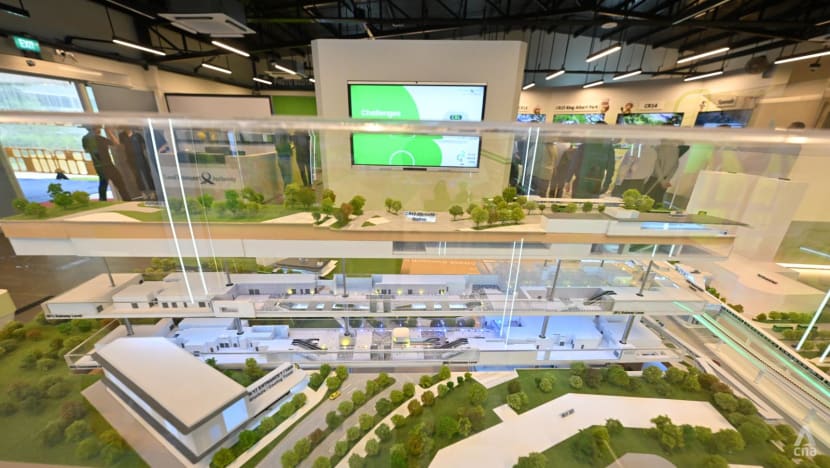
A 3D model of the Clementi Interchange Station on display at the Cross Island Line Phase 2 Project Information Centre in Clementi on Jul 7, 2025. (Photo: CNA/Jeremy Long)

This audio is generated by an AI tool.
SINGAPORE: Construction work for the six stations of second phase of the Cross Island Line (CRL) has started and is targeted for completion by 2032, the Land Transport Authority (LTA) said.
Of the six underground stations, two will be interchange stations – Clementi and King Albert Park – and they will connect commuters to the East-West Line and Downtown Line (DTL) respectively.
The other four stations are Turf City, Maju, West Coast and Jurong Lake District, which are working names, LTA said on Monday (Jul 7).
The second phase will extend the 29km-long track of the first phase by another 15km westwards.
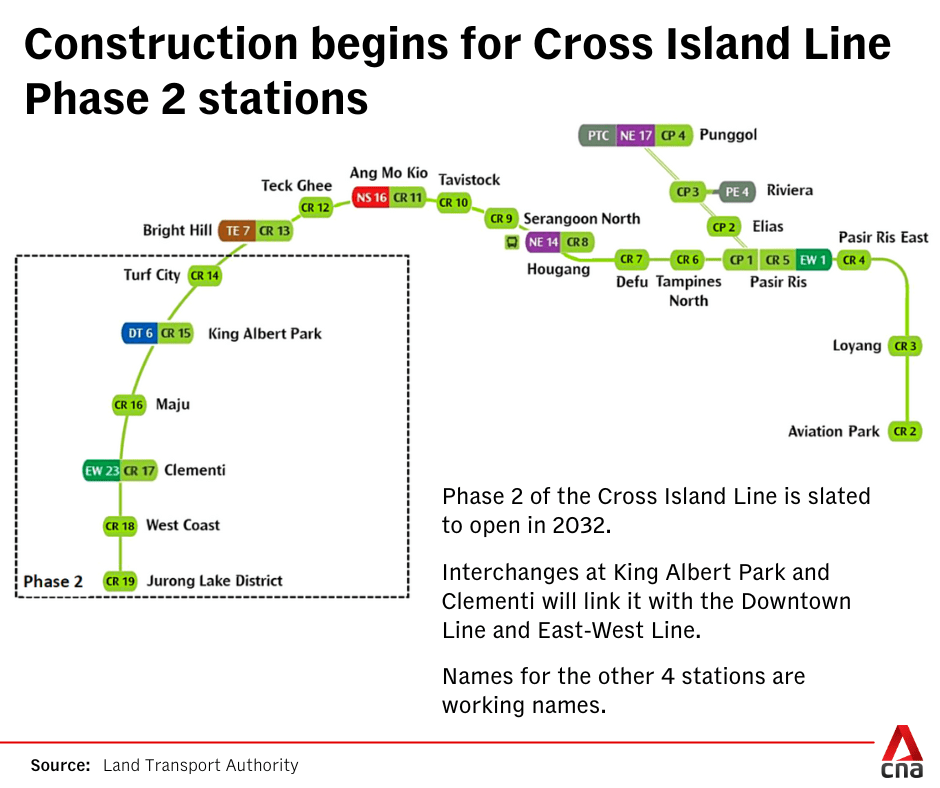
Speaking to the media on Monday at the groundbreaking ceremony at the site of the future Clementi Station along the line, Acting Minister for Transport Jeffrey Siow said that the most important function of the CRL is to “significantly increase the resilience of our rail network”.
He said that when the MRT network was first built, the first few lines took residents from their areas of residence to the city.
“But if you wanted to travel from one (public housing) estate to another … one had to take the train all the way to the city, change lines and then go in the opposite direction to your destinations.”
He added that the Circle Line built in 2009 was Singapore’s first “orbital line” that connected the older lines to each other.
This was a “game changer” that opened up many new travel routes and gave commuters multiple ways to get to the same destination.
The CRL will be the “next orbital line”, with eight of the 21 stations along the line being interchanges.
This means that commuters will have more routes to their destinations and it also helps to “absorb the impact of service disruptions”.
“As a new benefit, it will open up new windows for maintenance, because as our rail network expands and ages, more maintenance and renewal works will be needed,” Mr Siow said.
Such works could, at some point, be scheduled not just at night but during the day as well.
He said that this was what happened in older and more mature metro systems such as those in overseas cities such as London, New York or Paris.
“So, when a certain section is out of service, even during the day, commuters can have alternative routes.”
Mr Siow added that the CRL will probably be Singapore’s last east-to-west MRT line.
“There is no, or not a lot more, underground space left for another line like this,” he said. “And so for now, we have planned ahead to ensure that the CRL has the capacity to meet commuter demand.”
The line will begin operations with six train cars, with the provision to allow for eight train cars in the future.
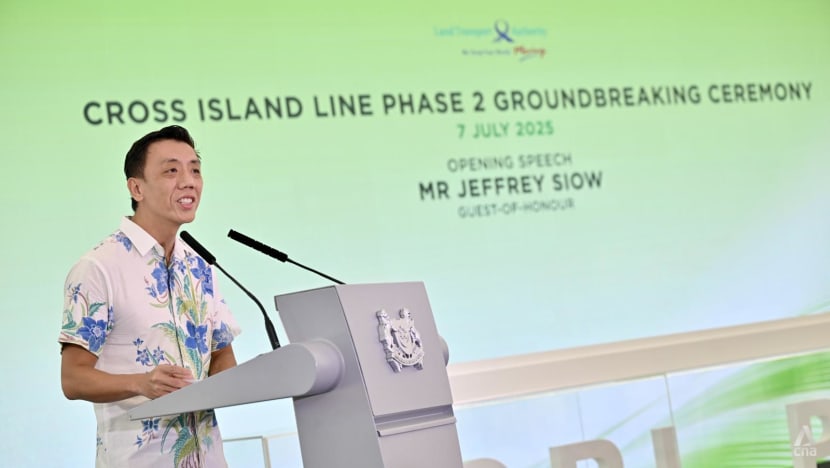
LTA said that this second phase will also improve public transport connectivity for those living or travelling to and from the west.
For example, West Coast residents travelling to work at Ang Mo Kio Industrial Park can save up to 40 minutes on their commute – from more than an hour by train and bus today to 30 minutes on the CRL.
Construction of the first phase started in January 2023 with 12 stations: Bright Hill, Ang Mo Kio, Hougang, Pasir Ris, Aviation Park, Loyang, Pasir Ris East, Tampines North, Defu, Serangoon North, Tavistock and Teck Ghee. It is expected to be completed in 2030.
The construction of a 7.3km CRL-Punggol Extension will comprise four stations: Punggol, Riviera, Pasir Ris and Elias. Construction began in October 2023 and is targeted for completion in 2032.
The third phase, which will serve the Jurong Industrial Estate, is now subject to engineering studies. More details will be announced after these studies are completed.
When completed, the CRL will be more than 50km long and will be Singapore’s longest fully underground line connecting the east, west and northeastern parts of the island.
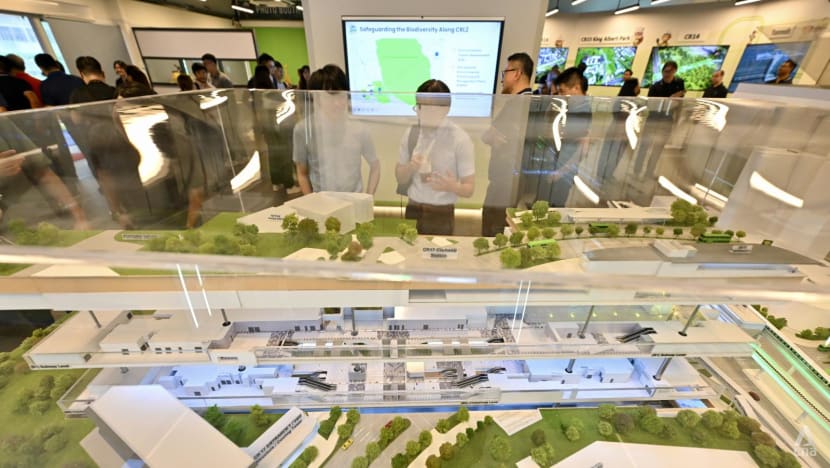
DEEPEST STATION IN SINGAPORE
To prepare for the opening of the CRL's second phase, works will be carried out at the Clementi station on East-West Line and the King Albert Park station on the Downtown Line to provide commuters with seamless transfers to the new line.
“Construction works for these transfer links will be implemented in phases and will be monitored closely to minimise any disruptions to existing train services,” LTA said.
When completed, the King Albert Park interchange station on the CRL will be Singapore’s deepest MRT station, at 50m deep, which is equivalent to the height of a 16-storey building.
It will surpass the CRL's Pasir Ris station which, when completed, will be 47m deep and Bencoolen station on the Downtown Line, the deepest existing underground station for now at 43m.
Among the engineering challenges of constructing the CRL's second phase will be boring between different ground conditions along the 15km stretch.
The ground at Bukit Timah, for instance, comprises granite that is stronger, while the ground at the Jurong area comprises layers of different ground conditions that are less stable.
The ground at the Jurong area will therefore have to be properly grouted, a process to strengthen the ground, before tunnelling begins.
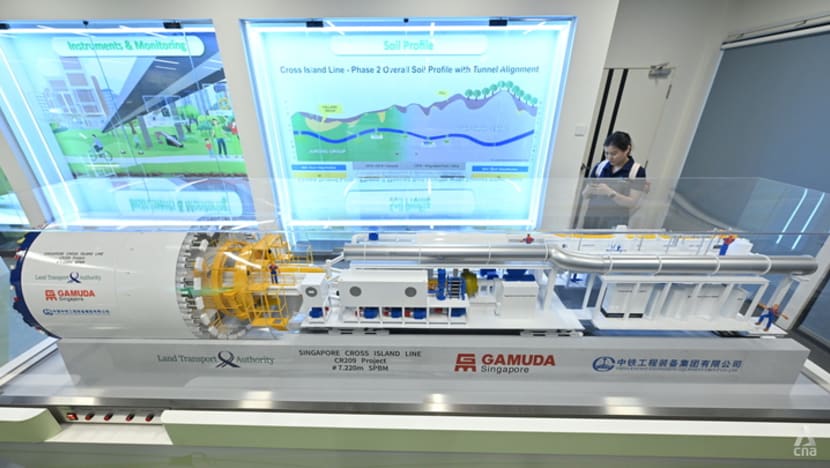
Connecting the first phase of the CRL with second phase will be a 5km bored tunnel between the CRL's Bright Hill and CR14 stations, LTA said.
This will run through the Central Catchment Nature Reserve and will be constructed using a large-diameter tunnel boring machine measuring 12.8m in diameter.
The machine will “bore through the ground only once for the construction of the tunnel, which houses two tracks, improving productivity and construction efficiency”, LTA said.
The tunnelling works towards the Central Catchment Nature Reserve started in May this year, along with ongoing ground improvement works.
The use of electric machinery such as excavators, tipper trucks and cranes will also be explored to reduce construction-related emissions and noise, among other green measures that will be implemented during the construction of the second phase.
The CRL's Changi East Depot, which houses the line’s operations control centre as well as maintenance facilities for up to 70 trains for the line, will also be fitted with photovoltaic solar panels to generate renewable energy for depot operations.
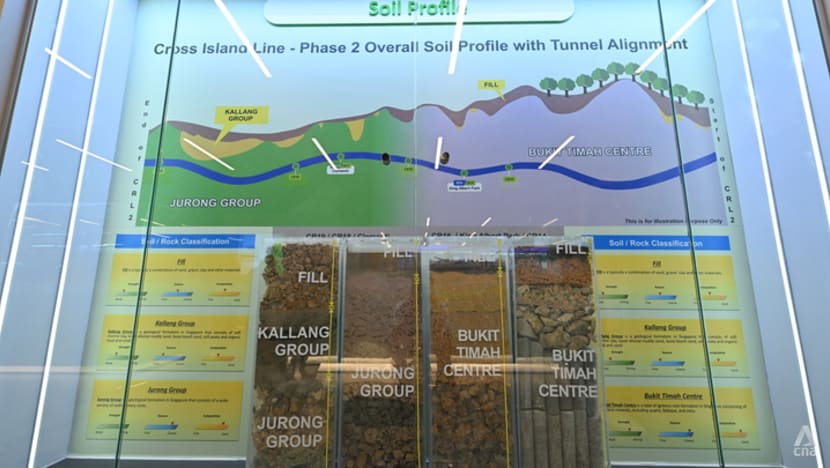
NATURE GROUPS CONSULTED
The second phase of the CRL covers a number of biodiversity areas including Eng Neo Avenue Forest, Maju Forest and Clementi Forest.
LTA said that since 2013, it has worked closely with nature group members to discuss the various alignment options, optimise the worksites and co-create mitigation measures arising from the environmental impact assessment.
This partnership has yielded “significant improvements”, including reducing the size of a worksite at Windsor Nature Park from 15,000sqm to 7,000sqm, and installing aerial rope bridges and underground culverts to facilitate the safe movement of animals across roads, LTA added.
Before works began, comprehensive environmental impact assessments were carried out to assess any potential impact of the construction and operations on the nearby environment.
An environmental monitoring and management plan has been implemented at the sites, including several measures such as opaque screens and windows at the site offices to prevent bird collisions, as well as the wildlife proofing of food waste bins.
A new freshwater marsh has been constructed at the CRL's King Albert Park site to serve as a habitat for the fauna and flora from the existing marsh.
A biodiversity training centre has been set up at the Fairways Drive site office in Bukit Timah to provide “mandatory wildlife awareness training for site workers and promote an environmentally responsible culture on site”, LTA said.
It also said that it would continue to engage with nature groups throughout the construction and operation of the CRL.
















